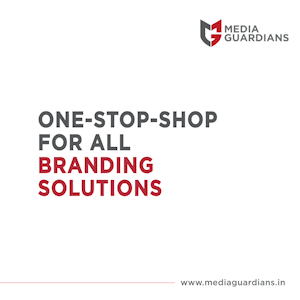Q: How has KONE’s journey in India evolved to meet the demands of a rapidly urbanising nation?
We entered India in 1984 and today we’re a market leader with a manufacturing unit in Sriperumbudur and two Technology & Engineering Centres. Over the years, we’ve moved from basic elevators to digitally connected, energy-efficient systems for residential, commercial, and infrastructure projects. Our focus has been on making people flow solutions smart, safe, and sustainable — in sync with India’s vertical growth story.
Q: How has the vertical mobility landscape changed over the last decade?
Elevators are no longer just transport — they’re integral to building efficiency and user experience. The last decade saw high-rises, metros, and mixed-use developments transform the market. KONE has been at the forefront of this shift, delivering innovations and strong service support. As India enters its next urbanisation phase, we aim to shape it with smarter, greener solutions aligned with smart city and green building goals.
Q: What are your most significant recent innovations?
A standout is KONE UltraRope®, a carbon-fibre hoisting solution that’s lighter, more durable, and enables travel up to 1,000 metres — revolutionising high-rise mobility. Our KONE DX Class elevators are the world’s first digitally connected models, with built-in APIs for seamless smart building integration. We’ve also advanced destination control systems, touchless tech, and our KONE 24/7 Connected Services for predictive maintenance.
Q: How are IoT, AI, and predictive analytics changing elevator performance and safety?
Through KONE 24/7 Connected Services, we use IoT and AI for real-time monitoring, detecting issues before they occur, ensuring maximum uptime, and enhancing passenger safety. This proactive approach not only improves reliability but also extends the lifecycle of equipment, aligning with KONE’s sustainability and customer-first philosophy.
 Since 1984, KONE has been a driving force in India’s vertical mobility transformation. From introducing basic elevators to launching digitally connected, sustainable people-flow solutions, the company has evolved in lockstep with India’s rapid urbanisation. In this exclusive conversation, Amit Gossain shares how KONE is redefining safety, sustainability, and smart technology in elevators and escalators for the next chapter of India’s growth.
Since 1984, KONE has been a driving force in India’s vertical mobility transformation. From introducing basic elevators to launching digitally connected, sustainable people-flow solutions, the company has evolved in lockstep with India’s rapid urbanisation. In this exclusive conversation, Amit Gossain shares how KONE is redefining safety, sustainability, and smart technology in elevators and escalators for the next chapter of India’s growth.
 Escalate. AI also optimises traffic flow in high-rise buildings through intelligent dispatching. This means reduced downtime, faster service, and improved safety. Integration with building management systems further supports data-driven performance planning.
Escalate. AI also optimises traffic flow in high-rise buildings through intelligent dispatching. This means reduced downtime, faster service, and improved safety. Integration with building management systems further supports data-driven performance planning.
Q: How do you ensure maximum safety and reliability in high-rise and high-footfall environments?
We build in multiple safety redundancies — from automatic rescue devices to advanced braking systems. UltraRope® ensures stability under extreme conditions, while intelligent group controls optimise traffic. In metros and airports, our escalators and elevators are engineered for heavy usage with robust materials, frequent maintenance, and 24/7 monitoring to ensure uninterrupted service.Q: What about compliance with safety standards?
All our products comply with Indian standards like IS 14665 and global norms including EN 81, ISO 25745, and NBC 2016. Every unit undergoes stringent quality checks, type testing, and compliance audits. Our technicians are trained to meet these requirements, and we welcome third-party audits to ensure consistent quality and safety.Q: Sustainability is now a key expectation. How does KONE reduce energy use and emissions?
Sustainability is central to our design and operations. Our elevators use regenerative drives, LED lighting, and energy-efficient motors. We promote modernisation over replacement to extend lifecycle, and our Sriperumbudur factory runs on solar power and practices rainwater harvesting. We’re committed to lowering emissions across the value chain in line with low-carbon urban development.Q: Can you explain features like regenerative drives and eco-modes?
Regenerative drives capture unused braking energy and return it to the building’s grid, reducing consumption by up to 30%. Gearless motors cut electricity use while maintaining speed and performance. Eco-modes reduce idle-time energy draw, making these systems ideal for buildings seeking IGBC or LEED certification. Q: How do your solutions help projects meet green certification goals?
Q: How do your solutions help projects meet green certification goals?
We provide Environmental Product Declarations and life cycle assessments for all major solutions. Low-emission materials, energy-efficient motors, and regenerative braking contribute directly to green rating points. Integration with automation systems also improves building performance, helping developers meet IGBC and LEED targets.Q: How do you approach large-scale infrastructure projects like metros and airports?
For such projects, we offer TransitMaster™ escalators and high-capacity elevators designed for durability and digital integration. Open APIs and the DX platform allow remote diagnostics, data sharing, and traffic optimisation. We also create tailored people flow plans to ensure efficiency, safety, and adaptability in high-density spaces.Q: With Tier 2 and 3 cities growing, how do you balance affordability and performance?
We’ve localised products like KONE U MonoSpace® and S MonoSpace® for the mid-rise segment, offering essential features with strong energy performance at competitive prices. Expanding regional service hubs, training local technicians, and modular product design ensure fast service, adaptability, and ease of maintenance in these markets.Q: What trends will shape the future of vertical mobility?
We see a rise in connected elevators, AI-driven maintenance, and climate-conscious solutions. The convergence of vertical mobility with smart city platforms will accelerate. With innovations like the DX Class, UltraRope®, and predictive analytics, we’re investing in digital services, R&D, and sustainability to lead in an era of intelligent, inclusive, and future-ready mobility.The future of vertical mobility will be intelligent, sustainable, and seamlessly integrated into the smart city ecosystem — and KONE is ready to lead that transformation.







